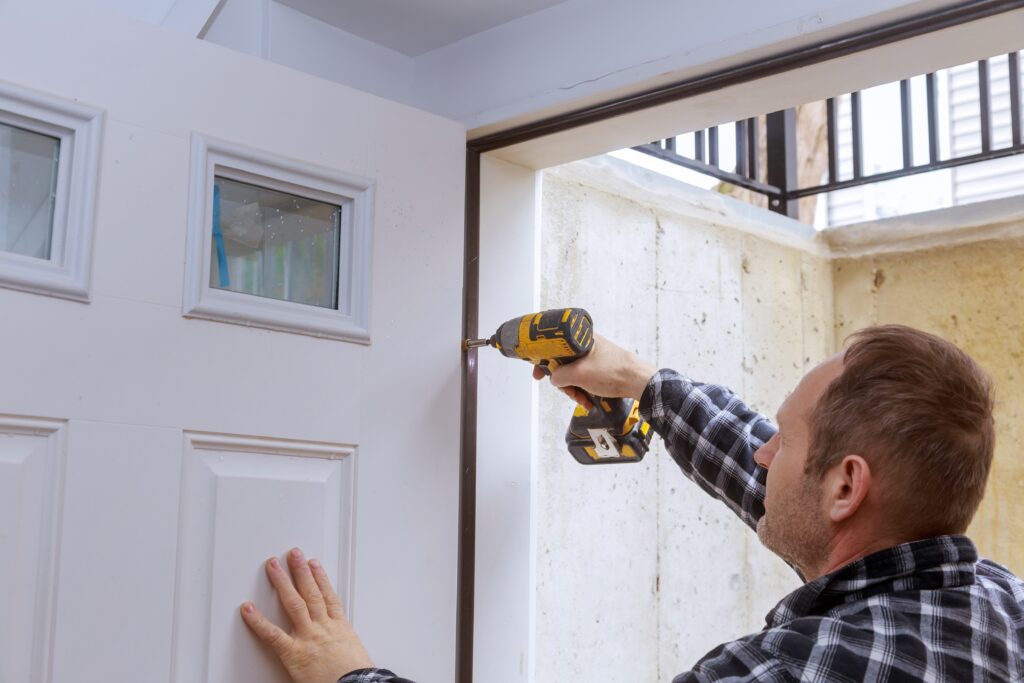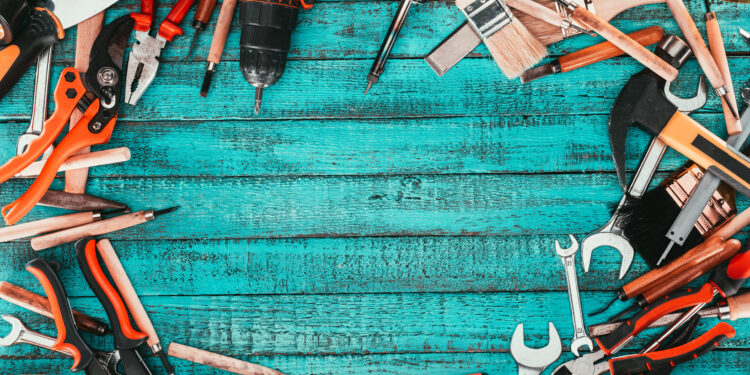Tools that every UK homeowner should have aren’t just for the dedicated DIY enthusiast — they’re for anyone who’s ever had to tighten a wobbly chair leg, silence a squeaky door, or rescue a shelf from a slow and tragic collapse. Whether you live in a cosy terraced house or a modern city flat, a small but well-chosen toolkit can save you time, money, and the frustration of waiting for a tradesperson to fix something you could have sorted in minutes. In this guide, we’ll explore the essential tools every UK homeowner should keep close at hand for quick, effective home fixes.
Think of your toolkit as the first-aid kit for your house. A well-stocked one saves time, money, and your Saturday afternoon sanity when things inevitably go wrong.
Below is our definitive list of must-have tools for every UK homeowner, from the obvious basics to the often-overlooked heroes.
1. The Trusty Hammer
If DIY were a football team, the hammer would be your captain. Specifically, a good-quality claw hammer is a must. The flat end drives nails in, the claw end pulls them out, perfect for hanging pictures, assembling flat-pack furniture, or removing that crooked nail you put in after your third cup of coffee.
Pro tip: Look for a hammer with a comfortable, non-slip grip.
2. Screwdrivers – Flathead & Phillips
Loose kitchen cupboard handle? Wobbly door hinge? You’ll reach for a screwdriver more often than your kettle (well, almost). A set with both flathead and Phillips (cross-shaped) screwdrivers in various sizes is best.
Tiny humour moment: If you’ve ever tried to use a butter knife instead of a screwdriver, you already know why this is essential.
3. Tape Measure
“Measure twice, cut once” — the ancient wisdom of DIY. Whether you’re fitting blinds, buying a rug, or checking if your new fridge will get through the door, a reliable 5-metre tape measure is indispensable.
Top tip: Choose a measuring tape with a reliable lock mechanism to ensure it stays in place and prevents accidental retraction.
4. Adjustable Spanner
For occasional plumbing adjustments or tightening bolts, an adjustable spanner is a versatile choice. It accommodates multiple nut and bolt sizes, reducing the need for a full set of spanners.
5. Spirit Level
Crooked pictures, uneven shelves, or tilting curtain rails; all are avoidable with a spirit level. Whether it’s the small pocket version or the longer type, you’ll wonder how you ever lived without it.
6. Pliers – Standard & Needle Nose
For gripping, bending, or cutting wires, pliers are the go-to. Standard pliers handle most jobs, while needle-nose pliers are brilliant for fiddly tasks in tight spaces.
7. Stanley Knife (Utility Knife)
A sharp, retractable utility knife is perfect for opening boxes, trimming wallpaper, or cutting old carpet. Just remember: keep spare blades and change them when they get dull — blunt blades are more dangerous than sharp ones.
8. Cordless Drill & Drill Bits
When a screwdriver is insufficient for the task, a cordless drill offers both efficiency and ease. Choose a reliable model with a comprehensive selection of drill bits suitable for wood, metal, and masonry. Many cordless drills also function as power screwdrivers, adding to their versatility.
Battery life tip: Keep it charged. A drill with a flat battery is just an expensive paperweight.
9. Allen Keys (Hex Keys)
If you have ever assembled flat-pack furniture, you will be familiar with the Allen key. Owning a complete set in both metric and imperial sizes ensures you are prepared for any assembly task.
10. Safety Gear – Gloves, Goggles, Ear Protection
Yes, safety gear counts as tools. Working without it is fine—until it’s not. Always protect your eyes, hands, and ears from hazards such as flying debris, sharp edges, and loud drilling.
11. Step Ladder
Even if you’re tall, you’re not that tall. For changing lightbulbs, painting ceilings, or retrieving the Christmas decorations from the loft, a sturdy step ladder is a must. Avoid balancing on chairs unless you want a trip to A&E.
12. Torch (and Spare Batteries)
When the power cuts out or you’re working in a dark cupboard under the stairs, a bright LED torch makes all the difference. Keep it somewhere you can find it in the dark.
13. WD-40 (and Duct Tape)
The two universal problem-solvers: if it moves and shouldn’t, secure it with duct tape. If it doesn’t move and should, a spray of WD-40 usually does the trick. Not technically “tools”, but no toolkit is complete without them.
14. Stud Finder
If you’re putting up shelves or a heavy mirror, knowing where the wall studs are will save you from future disasters.
15. Basic Tool Box or Bag
Lastly, store your tools in one place. A sturdy toolbox or bag keeps everything organised and easy to find, saving time and avoiding unnecessary frustration. It also helps you appear prepared and capable when tackling household tasks.
How to build your toolkit affordably?
Starting from scratch? You don’t need to buy every tool on the shelf in one go. Begin with the absolute essentials — a hammer, a set of screwdrivers, a tape measure, and a good pair of pliers. These basics will cover most minor household fixes. From there, gradually add more specialised tools as specific jobs arise, such as a cordless drill, adjustable spanner, or spirit level. Keep an eye out for seasonal sales at DIY stores, browse online marketplaces for second-hand bargains, and consider investing in a decent-quality starter kit that offers good value for money. Over time, you’ll build a toolkit that’s both practical and tailored to your home’s needs.
Why should every homeowner DIY the basics?
Being able to do minor repairs saves you money, gives you a sense of accomplishment, and means you’re not waiting three days for someone to come and fix that door handle. It’s also a useful life skill — one you can pass on to your kids (along with the knowledge that duct tape does fix almost everything).

Final Word!
Your home will inevitably present challenges such as dripping taps, squeaky floors, and stubborn screws. With the right tools, you can address these issues efficiently and with confidence. A well-equipped toolkit is not only about repairing problems but also about being prepared and capable when maintenance needs arise.
For more practical tips, detailed guides, and expert advice on maintaining and improving your home, follow thehouseholddaily. From simple DIY fixes to long-term home care strategies, you’ll find reliable information to help you keep your home in excellent condition year-round.


















